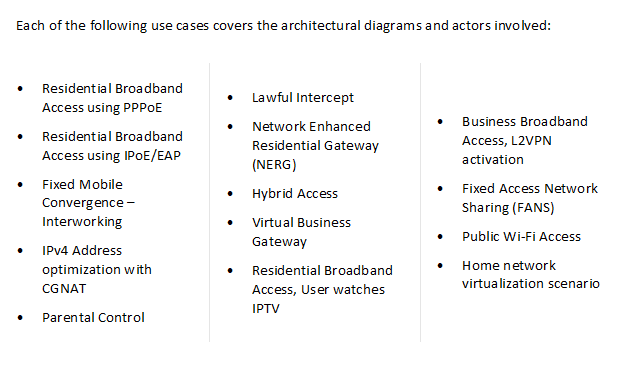Resources and Educational Materials
Learn about the promise of the CloudCO, Broadband Access Abstraction, drivers and use cases, and the roles of the BBF optimizing the Central Office for the Cloud
The New CloudCO is Optimized for Rapid Services Deployment
An introduction to a major industry initiative that brings new services, ultrafast home and access networks closer together as the next phase of the deployment of broadband. Learn about its value, technology, and architecture in this white paper.
Broadband Access Abstraction Provides a Standardized, Automated Deployment
Learn about how this CloudCO project overlaps with Open Broadband here.
TR-384 CloudCO Reference Architectural Framework
The specification defines the reference architectural framework of the CloudCO. Functional modules are defined, but not the details of their internal operation. This framework starts from basic Northbound API capabilities so that function composition, initialization, and management of the CloudCO resources can be supported and created as a byproduct of end-to-end service composition.
The specification is the first phase in a multiphase project. Additional work is underway to include migration, detailed interference definitions, test cases & applications notes, use case & scenarios and reference implementations. Progress on these projects can be seen on the BBF members sites.
View the technical report here.
TR-416: CloudCO Use Cases and Scenarios
This specification defines 14 CloudCO Use Cases. Some of the use cases are enabling legacy scenarios, some new CloudCO-only use cases are also described. The intention of the uses case are to test the validity of the architecture, and will allow consideration of the information that needs to be exchanged across the interfaces between the functional blocks of the architecture.

View the technical report here.
TR-317: Network Enhanced Residential Gateway
TR-317 specifies the Network Enhanced Residential Gateway (NERG) architecture. NERG consists in shifting some of the functionality of a residential gateway (RG), as defined in TR-124 [6], to the operator’s network.
With NERG, the functions provided traditionally by the RG are now distributed between an on-site device called a BRG (Bridged Residential Gateway) and a network-based component, called vG (virtual Gateway). The vG is part of a flexible hosting environment that can benefit both from network equipment and recent network virtualization technology.
This Technical Report describes the motivation to deploy NERG, based on the use cases that it enables. In particular, NERG facilitates per subscriber per device services, LAN extension and simplified end user operations. Service providers looking for additional service offerings, such as personalized services, Smart Home and enhanced multimedia services, may find significant benefits in deploying NERG.
View the technical report here.